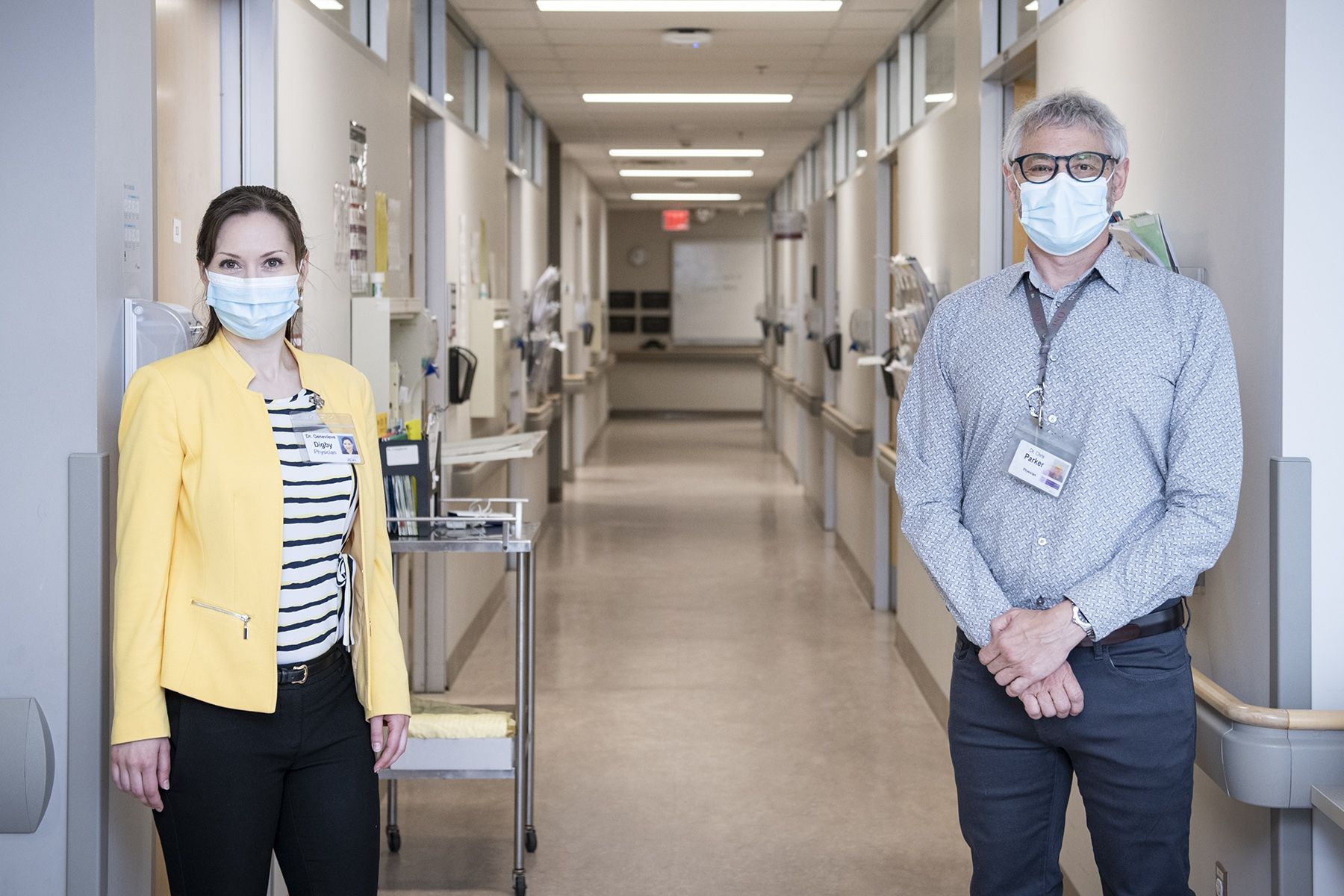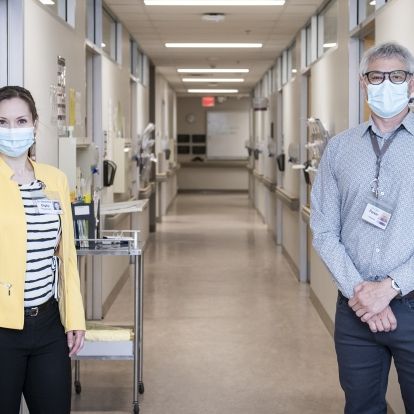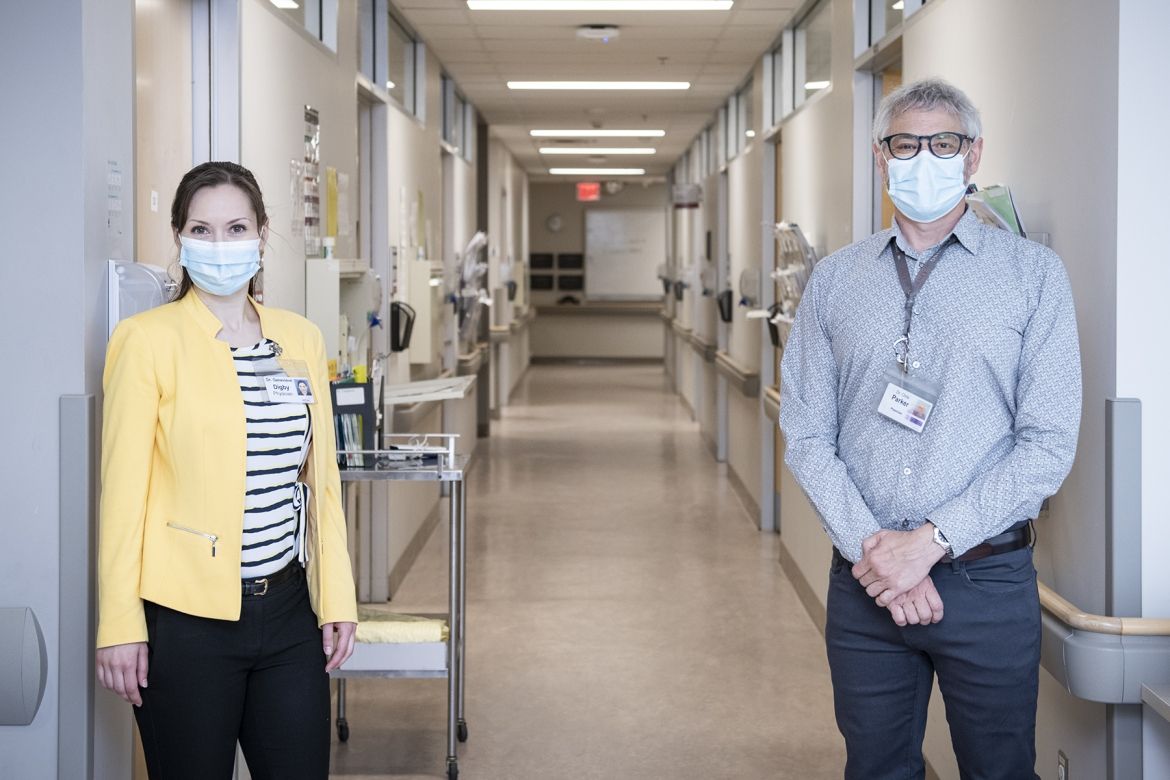Effective immediately masking is required for everyone when present on all inpatient units, in the Emergency Department (ED), the Urgent Care Centre (UCC), and the Children’s Outpatient Centre (COPC).

If you live in the southeastern Ontario region and are undergoing evaluation for possible lung cancer, a trip to Kingston Health Sciences Centre (KHSC) to visit the Lung Diagnostic Assessment Program (LDAP) is typically the next step in your care journey. Now, for anyone living in Napanee or further west, that trip to receive care has just been significantly reduced.
Starting today, a new satellite clinic of the LDAP has opened at the Lennox & Addington County General Hospital (LACGH) in Napanee which will see patients to coordinate their initial lung cancer diagnostic and staging investigations. The opening of this clinic will mean less travel time and improved access to care for patients and their caregivers who live in our region.
“Forty percent of the patients who currently come to the LDAP clinic live in Napanee or further west of the community,” says Dr. Geneviève Digby, clinical lead for the LDAP clinic. “It’s the ideal location for a satellite clinic and, with the support of our regional partners, will have the potential to see hundreds of patients every year.”
An important element in the location of this clinic is the proximity to the rural and Indigenous populations that live in southeastern Ontario. Research has shown that rural and Indigenous populations are less likely to survive lung cancer compared to urban populations, which is believed to be partly due to difficulty in accessing diagnostic and treatment facilities.
“By bringing a successful clinic model closer to people who face more barriers to receiving care our hope is that we will be addressing inequalities that exist around health care access,” says Dr. Christopher Parker, site lead for the LACGH LDAP clinic. “These barriers can include distance to travel, the cost involved with out-of-town travel as well as the stress for patients and their caregivers travelling to an unfamiliar location outside of their community.”
As part of the establishment of the satellite clinic, the LDAP team is working closely with the Indigenous community to help identify additional barriers to care as well as continuing to seek the community’s feedback on how this clinic can deliver culturally sensitive care. A key role that will be established as a result of these conversations is the inclusion of an Indigenous Lead within the LDAP.
“It’s very important for us to get the engagement and input from members of the Indigenous community to hear about their experiences and how the clinic can best serve their needs and incorporate that feedback into the ongoing work of our clinic,” says Dr. Digby. “An LDAP Indigenous Lead will help us continue these conversations with the community and identify opportunities where we can break down barriers and address inequalities.”
After the appointment at the satellite clinic, if a patient requires further investigations and management, follow-up visits may be at the LDAP clinic in Kingston. However, many patients will be able to continue to receive follow-up care in the community.
“We’re excited to bring an innovative care model, one that we believe is first of its kind in Ontario, to the Napanee hospital. This is an exciting opportunity to bring care to the patients instead of finding new ways of bringing patients to the providers,” says Dr. Digby. “This has been a true collaborative team effort and it took many people to make this a reality; it’s exciting for all of us to be at this point of opening the satellite.”
Gallery


Drs. Digby and Parker are two of the team members behind the opening of a satellite clinic for patients with suspected lung cancer in Napanee



